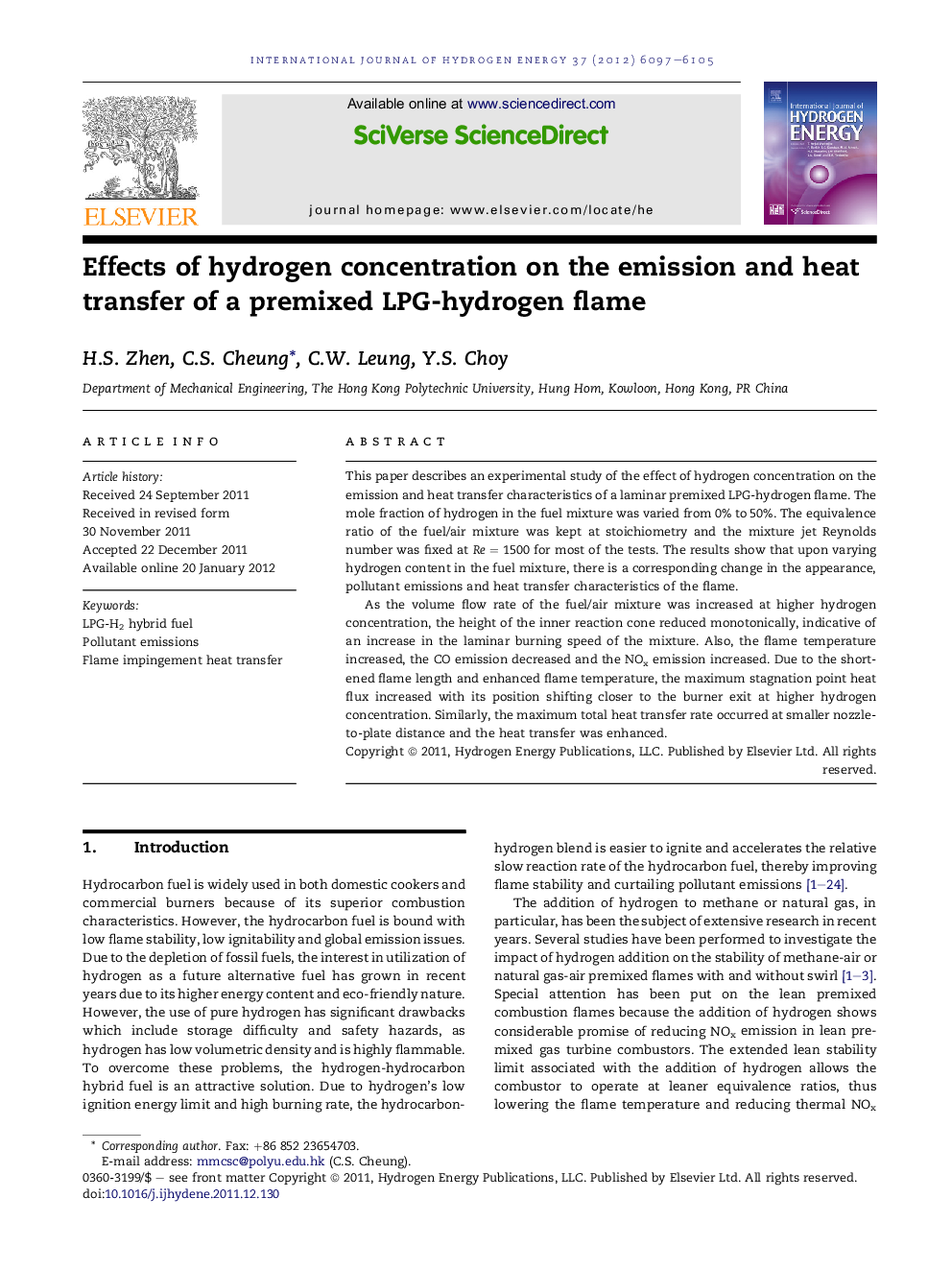| Article ID | Journal | Published Year | Pages | File Type |
|---|---|---|---|---|
| 1276901 | International Journal of Hydrogen Energy | 2012 | 9 Pages |
This paper describes an experimental study of the effect of hydrogen concentration on the emission and heat transfer characteristics of a laminar premixed LPG-hydrogen flame. The mole fraction of hydrogen in the fuel mixture was varied from 0% to 50%. The equivalence ratio of the fuel/air mixture was kept at stoichiometry and the mixture jet Reynolds number was fixed at Re = 1500 for most of the tests. The results show that upon varying hydrogen content in the fuel mixture, there is a corresponding change in the appearance, pollutant emissions and heat transfer characteristics of the flame.As the volume flow rate of the fuel/air mixture was increased at higher hydrogen concentration, the height of the inner reaction cone reduced monotonically, indicative of an increase in the laminar burning speed of the mixture. Also, the flame temperature increased, the CO emission decreased and the NOx emission increased. Due to the shortened flame length and enhanced flame temperature, the maximum stagnation point heat flux increased with its position shifting closer to the burner exit at higher hydrogen concentration. Similarly, the maximum total heat transfer rate occurred at smaller nozzle-to-plate distance and the heat transfer was enhanced.
► A study of effects of H2 addition on the behaviors of an LPG-air premixed flame. ► Laminar burning speed increases upon H2 addition for stoichiometric flames. ► Flame temperature increases, CO emission decreases and NOx emission increases. ► Maximum stagnation point heat flux increases with its position closer to the burner. ► Maximum heat transfer rate is enhanced and is at smaller nozzle-to-plate distance.
